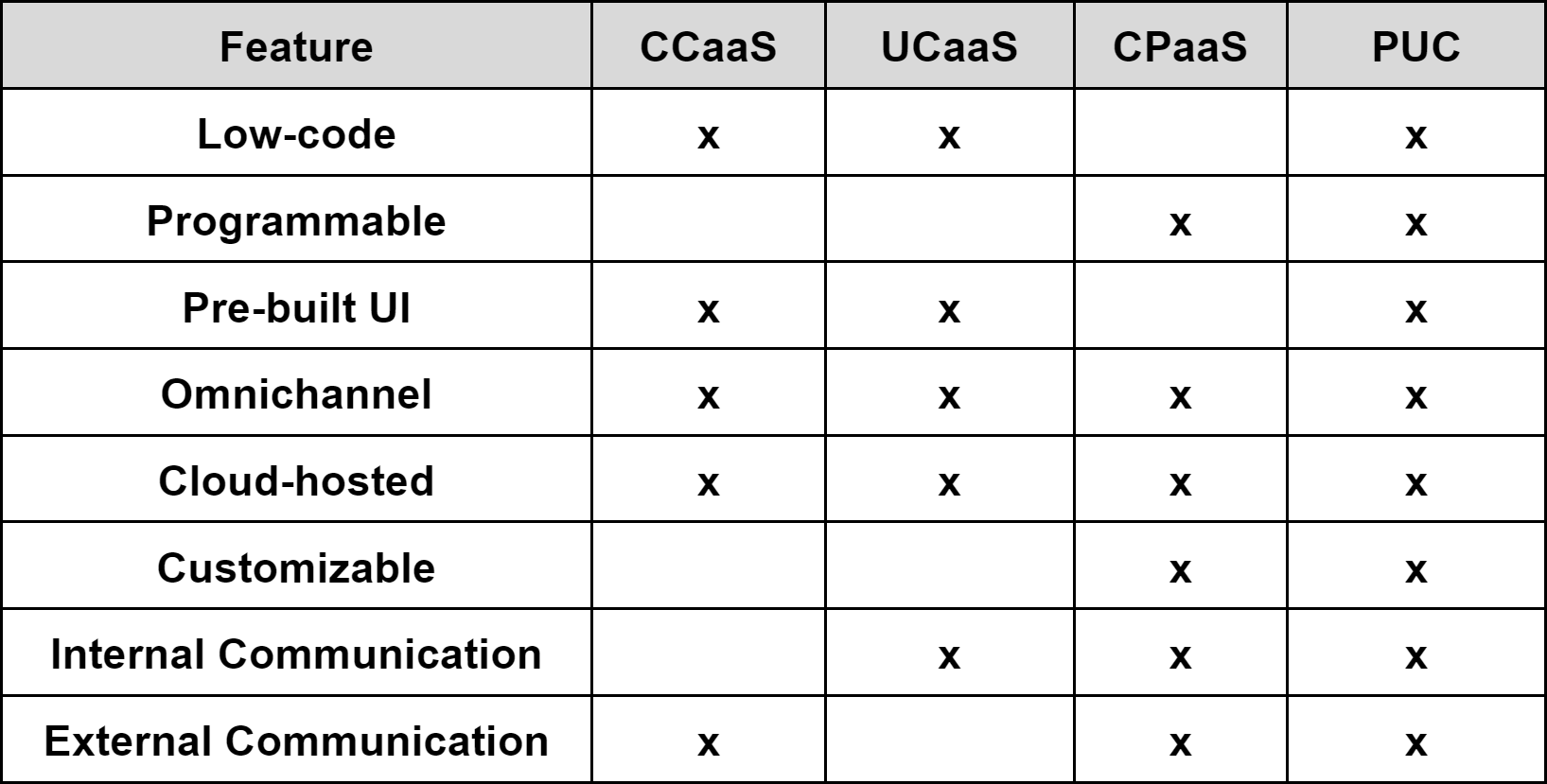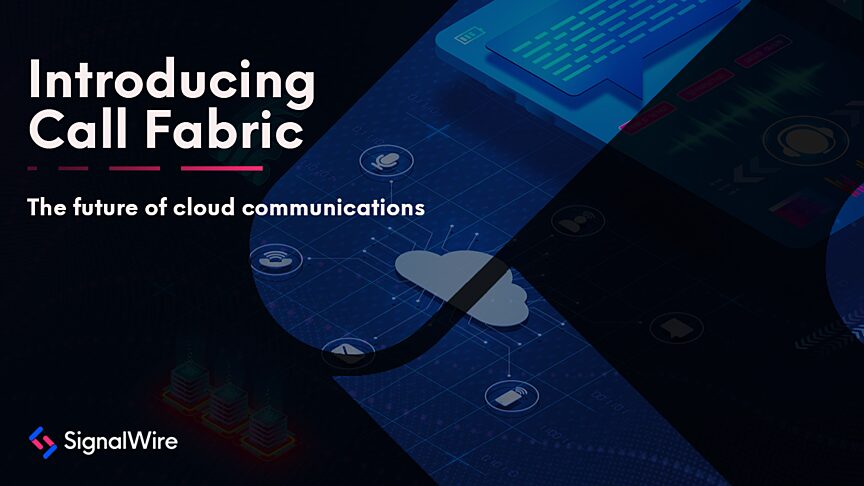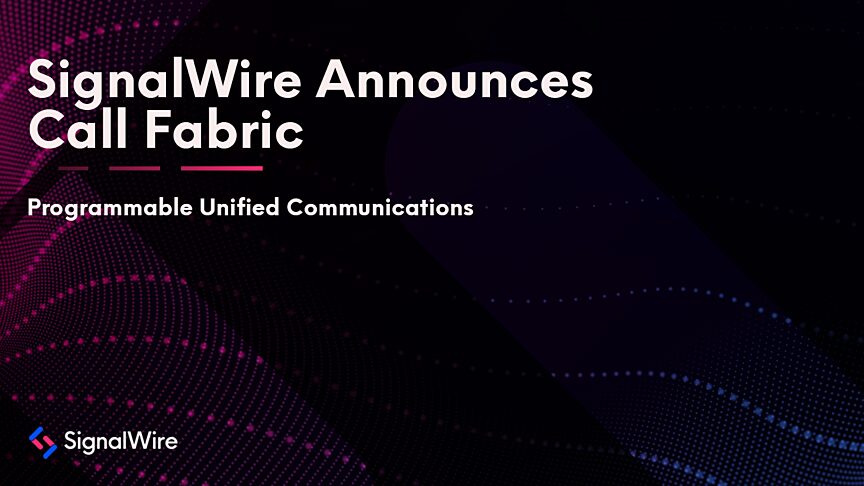What is CPaaS? How does it compare to UCaaS, CCaaS, and PUC?
CCaaS, UCaaS, CPaaS, and PUC - what’s the difference between them? Although there are similarities that overlap among these services, they’re distinct in their implementation, functionality, and target audiences. The one main feature they have in common is that they are all cloud-based communications platforms.
While on-prem contact centers and offices require physical space, servers, phone lines, maintenance, and other IT resources, these cloud solutions are all much more flexible and don’t require as many upfront costs. Hardware requirements include the basics: a good internet connection, personal devices, headsets, etc.
In this post, we’ll go over the meanings of each of these acronyms, what sets them apart from each other, and how you can determine which communication solution will work best for you.
To determine which service you want to use, start by asking yourself a few questions:
Do you need an out-of-the-box solution that is already fully built for you?
Or do you need custom solutions that can be connected to existing applications?
Do you need an internal communications platform to connect and collaborate with your team?
Or are you looking for tools to enhance external, customer-facing communication?
These are the biggest areas where CCaaS, UCaaS, CPaaS, and PUC differ from one another. Consider the levels of customizability you need, if you’re looking for collaboration tools, or if analytics and customer relationship management are a priority.
What is Contact Center As A Service (CCaaS)?
A Contact Center as a Service is a cloud contact center with a focus on external communications.
You might pay as you go for specific features that are made to be scalable and built for your specific business needs, but overall, CCaaS is a full suite of communications tools, fully developed and ready-made for you to use. With CCaaS, you don’t deal with bug fixes, maintenance, testing, and errors - you’re paying your chosen provider to maintain this for you.
CCaaS is heavily focused on customer relationship management. With CCaaS platforms, you can expect analytics, call management, ticketing systems, and AI chat support tools. CCaaS solutions make it easy for customers to contact you with tools like chat, video, voice, SMS, fax, and even social media messaging. IVRs, outbound dialing, and call routing should all be included for customer-facing communication.
What is Unified Communications as a Service (UCaaS)?
Unified Communications as a Service (or Unified Cloud Communications) is another ready-made platform that doesn’t have to be built in-house. This means that like CCaaS, your provider is dealing with the maintenance of the software itself. All you need for UCaaS is a good internet connection and a personal device.
As its name implies, UCaaS is an omnichannel platform that will cover all communications in one place, including voice, SMS, team messaging, video, and will often include collaboration tools.
UCaaS differs from CCaaS by focusing on internal communication among employees more than customer-facing contact center features and analytics. This makes it ideal for keeping remote teams connected. UCaaS solutions typically include file sharing, task management, and other team collaboration tools. In one dashboard, you can send texts, start videos, and initiate chats without having to manage multiple apps.
What is Communications Platform as a Service (CPaaS)?
A Communications Platform as a Service is a platform that offers APIs, SDKs, and other tools for developers to build customizable communication solutions that can integrate with already existing applications. These can be built out with voice, messaging, video, mass notifications, and just about anything that exists as a pre-made feature in UCaaS or CCaaS.
You might use CPaaS if you don’t want to get rid of current applications that are in use, but instead you want to pick certain features to add on. However, you’ll need some developers to do the work of implementing this kind of platform.
When it comes to CPaaS, you’re paying to use specific APIs and SDKs, instead of the ready-made interface you get with CCaaS or UCaaS. However, this is a cost effective, scalable, and customizable solution and can be tailored to your ultra specific business needs.
What is Programmable Unified Communications (PUC)?
Programmable Unified Communications represents a fusion of programmable interfaces and unified communication platforms. PUC platforms, like SignalWire's Call Fabric, combine the programmability of CPaaS with the unified communication capabilities of UCaaS and CCaaS. PUC offers comprehensive solutions that are easy to use, highly scalable, and customizable for both internal and external communications.
PUC platforms empower businesses to integrate voice, video, messaging, AI tools, and other features across various platforms in a uniform process, providing unprecedented flexibility and control over communication pathways. APIs can be integrated into backend systems, or user-friendly visual builders can be used to deploy pre-designed elements.
It can be helpful to have in-house developers for implementing certain PUC features, but because there are many turnkey products within the platform, it’s not always necessary. This allows users to build without the need for extensive coding expertise. Visual builders allow you to easily create call flows, IVRs, or video rooms, while scripts and markup allow you to customize or automate communication pathways.
Like UCaaS, PUC’s goal is to keep your communications all in one place. And like CPaaS, PUC allows you to connect with external platforms or existing applications.
Understanding how your business plans to use communications tools is an important first step to choosing between a CCaaS, UCaaS, CPaaS or PUC platform. If you’re looking for a little of everything, SignalWire’s Call Fabric could be a good starting point.
Sign up today for free to start building and experiment with Call Fabric’s extensive resources, then bring any questions to our community Slack.



